There’s a unique magic that happens when we bring a touch of nature indoors, transforming any space into a welcoming haven. Whether you’re a seasoned plant enthusiast or new to the world of greenery, creating stunning indoor plant displays can be both a rewarding and delightful endeavor. Imagine the joy of watching vibrant foliage breathe life into every corner of your home, as each room becomes a canvas for your creativity and personal style.
In this article, we’ll guide you through a variety of innovative ways to showcase your beloved plants, ensuring each room in your home has its own distinct character. From elegant hanging gardens in the kitchen to lush, cascading vines in the bathroom, you’ll discover techniques that cater to every level of gardening expertise. These tips are designed to help you maximize your space, infusing even the smallest areas with natural beauty and charm.
You’ll learn how to select the perfect plants for varying light conditions, along with creative ideas for unique containers that double as conversation starters. Our aim is to inspire both beginners and seasoned pros to experiment and express their individuality through indoor plant displays. By the end of this journey, you’ll not only have a deeper appreciation for indoor gardening but also a home filled with thriving, beautiful plants that reflect your personal touch.
Living Room Statement Pieces
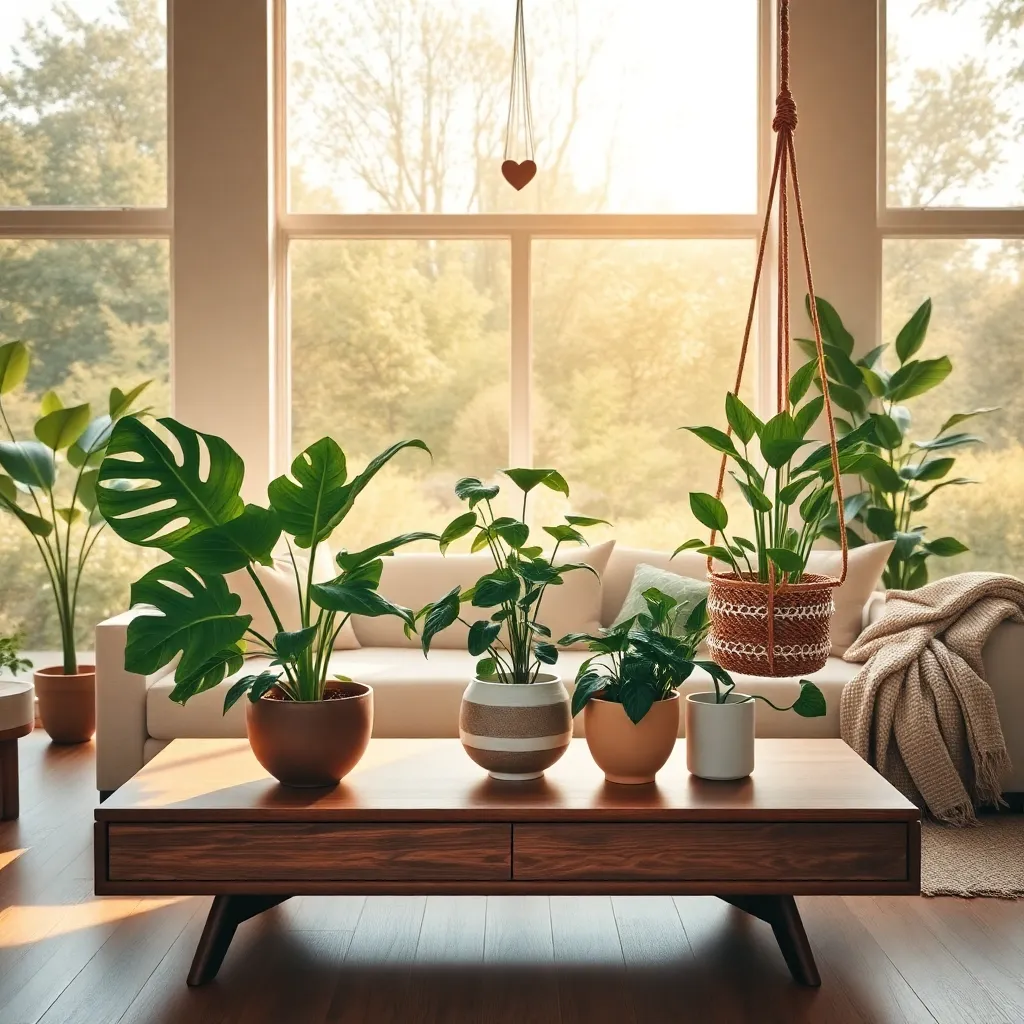
Transform your living room with striking statement plants that not only catch the eye but also thrive in indoor conditions. Consider incorporating a Fiddle Leaf Fig, known for its large, glossy leaves, which can add a dramatic touch to any space.
Place your Fiddle Leaf Fig in a spot where it can receive bright, indirect sunlight, as too much direct sun can scorch its leaves. Water it when the top inch of soil feels dry to the touch, ensuring you don’t overwater, which can lead to root rot.
For a truly low-maintenance option, try a Snake Plant, which can tolerate low light and infrequent watering. These hardy plants only need watering every two to three weeks and prefer a well-draining potting mix to prevent soggy roots.
Advanced gardeners might want to experiment with larger specimens, like the impressive Monstera Deliciosa, which thrives with a bit more humidity and bright, filtered light. Ensure you provide a moss pole or trellis for support as it grows, and mist the leaves regularly to mimic its natural rainforest environment.
Kitchen Herb Garden Ideas
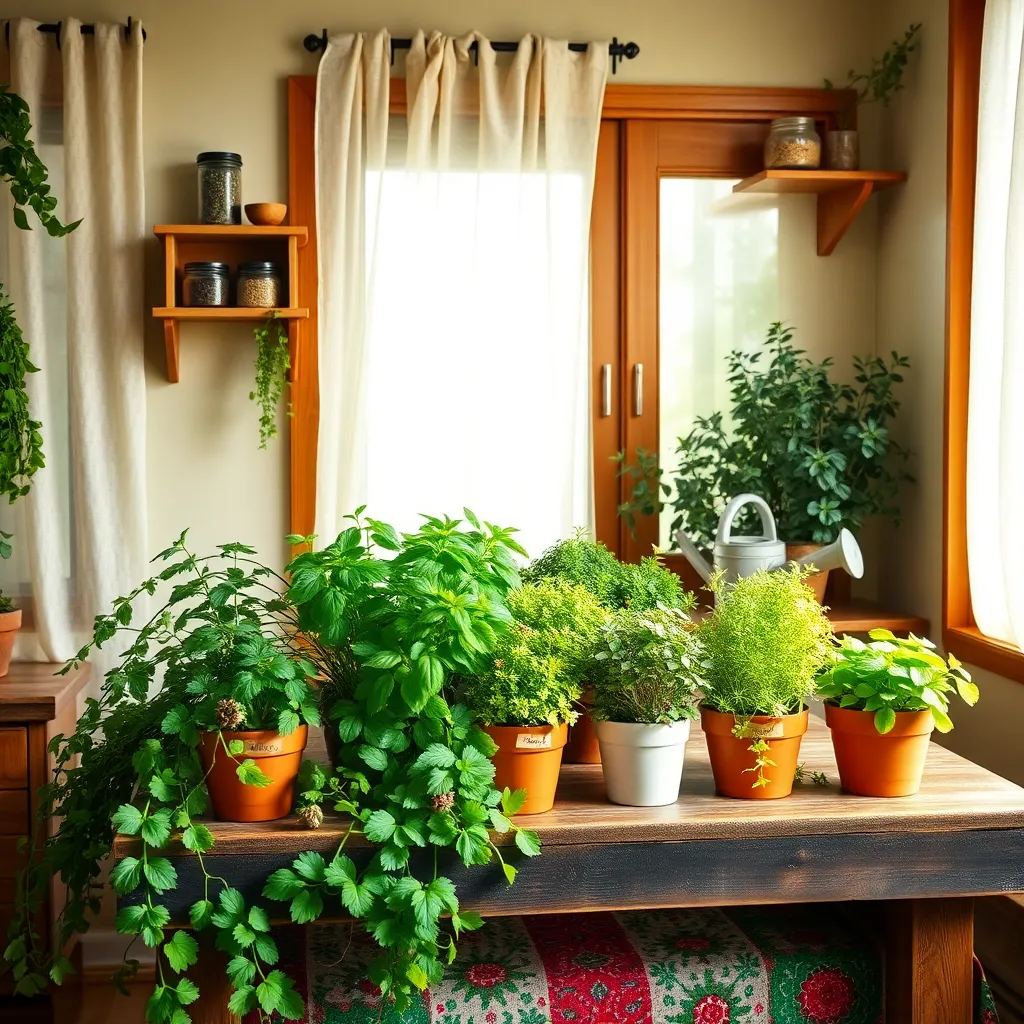
Creating a kitchen herb garden is a delightful way to bring fresh flavors right to your fingertips. Starting your herb garden is simple; select a sunny windowsill where your herbs can bask in at least six hours of sunlight each day.
Choose herbs that you frequently use in your cooking, such as basil, parsley, or thyme. Ensure your pots have good drainage by using containers with holes at the bottom and a saucer to catch excess water.
For soil, a high-quality potting mix is essential to provide the necessary nutrients and aeration. Water your herbs when the top inch of soil feels dry to the touch, but be careful not to overwater, which can lead to root rot.
Consider using a liquid fertilizer every four to six weeks to promote healthy growth. For a more advanced approach, try companion planting by combining herbs that thrive together, such as parsley and chives, which can share similar watering and sunlight needs.
Bedroom Serenity with Greenery
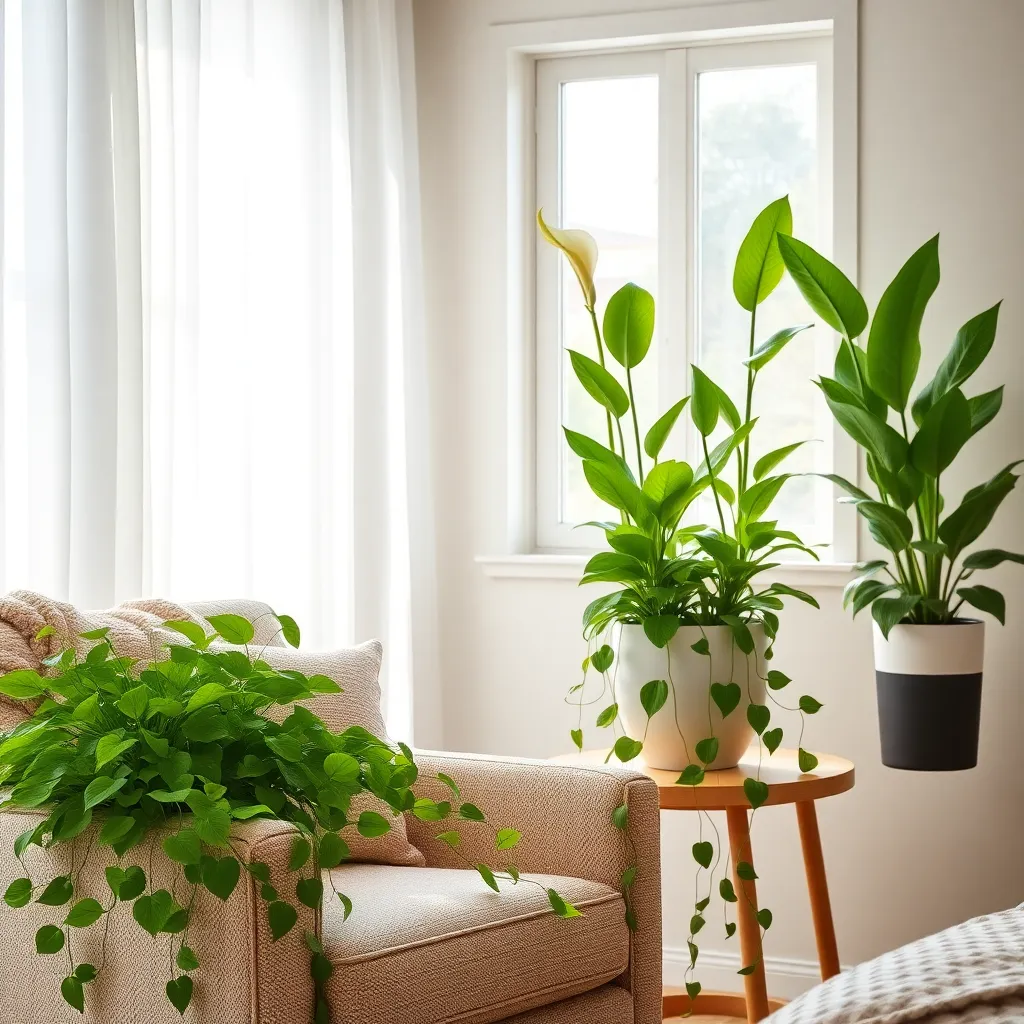
Enhancing your bedroom with plants can create a serene and calming atmosphere perfect for relaxation. Start by choosing low-maintenance plants like the snake plant, which thrives in low light and requires watering only every 2-4 weeks.
For a touch of elegance, consider adding a peace lily, which is known for its air-purifying qualities. Keep the soil moist but not soggy, and place it in indirect sunlight to encourage its beautiful white blooms.
Another great option is the pothos, a vining plant that grows well in hanging baskets or on shelves. It flourishes in various lighting conditions and only needs water when the top inch of soil feels dry.
To take your bedroom greenery to the next level, create a mini indoor jungle by combining different textures and heights. Use a mix of terracotta pots and hanging planters to add depth and visual interest to your space.
Bathroom Moisture-Loving Plants
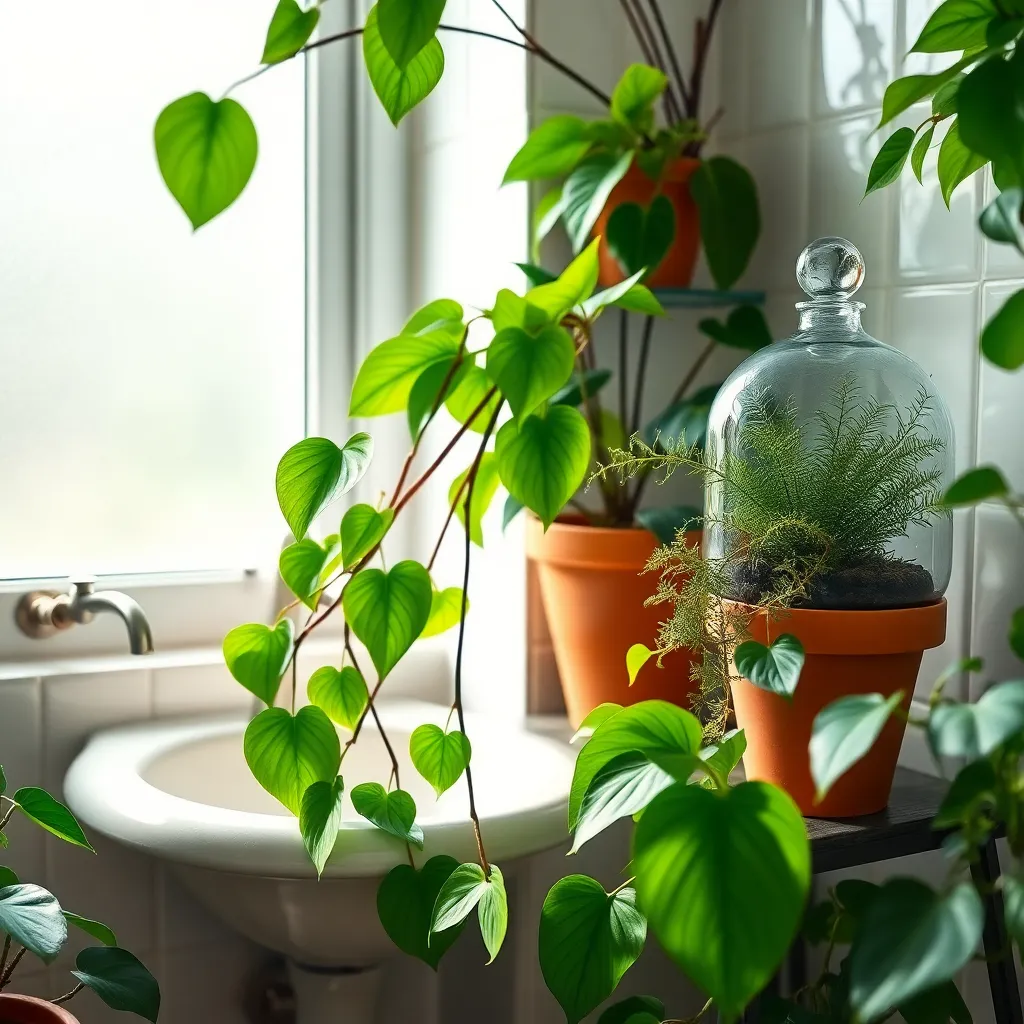
When selecting plants for your bathroom, focus on those that thrive in high humidity and indirect light. Ferns, orchids, and peace lilies are excellent choices due to their love for moist environments.
Ferns, such as the Boston fern, require consistently moist soil and benefit from being misted regularly. Ensure they are placed in a spot where they receive bright, filtered light to maintain their lush green fronds.
Orchids, particularly Phalaenopsis, are another great option for bathrooms. They thrive with regular watering, but it’s essential to let the potting medium dry out slightly between waterings to prevent root rot.
Peace lilies are forgiving plants that can handle the low light conditions often found in bathrooms. Keep their soil evenly moist and occasionally wipe their leaves with a damp cloth to keep them dust-free and healthy.
Home Office Plant Accents
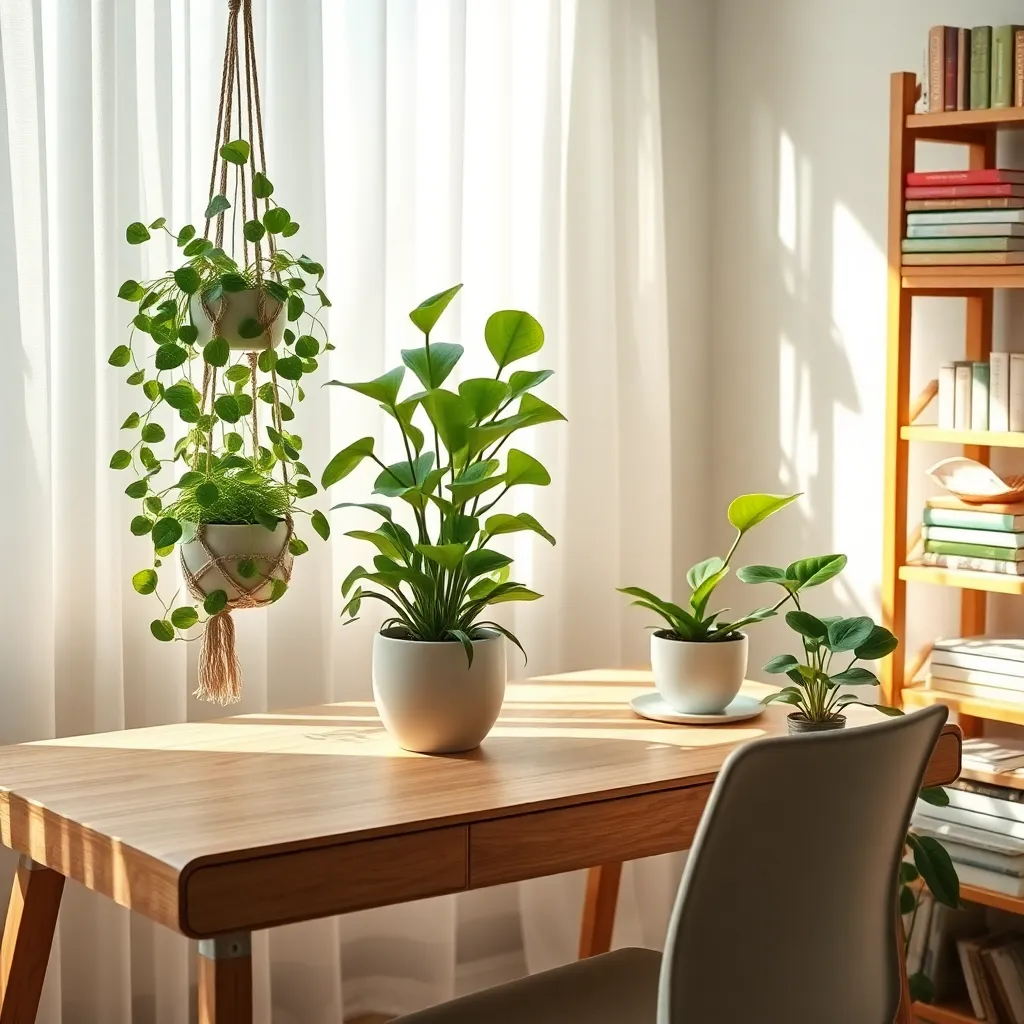
Enhancing your home office with plants can boost productivity and mood. Choose low-maintenance varieties like the Snake Plant that thrive in various lighting conditions.
Snake Plants are forgiving and can withstand irregular watering schedules, making them perfect for busy workdays. Ensure they are potted in well-draining soil and allow the top inch of soil to dry out between waterings.
For a more specialized touch, consider adding a ZZ Plant, which is equally resilient. These plants prefer indirect light and can survive in low-light conditions, and they only need watering every 2-3 weeks.
To maximize the benefits of your office plants, position them where they can receive indirect sunlight, such as near a window with sheer curtains. Regularly dust the leaves to promote photosynthesis and maintain their vibrant appearance.
Conclusion: Growing Success with These Plants
In exploring the art of creative indoor plant displays, we’ve delved into five key concepts that mirror essential relationship foundations: balance, communication, nurturing, adaptability, and growth. Just as plants thrive in a harmonious environment, balance in relationships ensures both partners feel valued. Effective communication, much like the dialogue between you and your plants’ needs, is crucial for understanding and connection. Nurturing your relationships, akin to daily plant care, fosters deep-rooted bonds. Adaptability, whether in rearranging your plant display or navigating life’s changes, keeps relationships resilient. Finally, growth, both personal and shared, is the ultimate testament to a thriving relationship.
Take an immediate step today by redesigning a corner of your home with a new plant display, using it as a reminder to cultivate these qualities in your relationships. Save or bookmark this article to revisit these principles whenever you need a boost of inspiration. Remember, the journey to relationship success is ongoing, and like nurturing a garden, it requires continuous effort and love. Empower yourself to transform your living space and relationships with creativity and care, setting the stage for flourishing connections.
